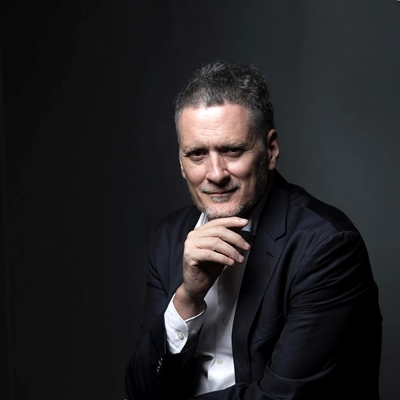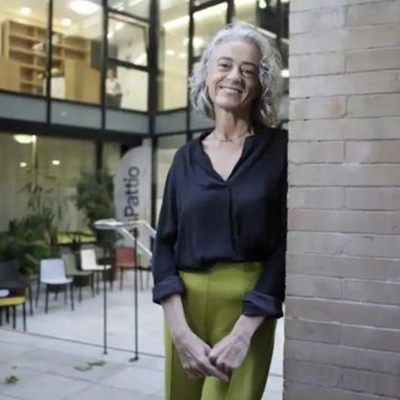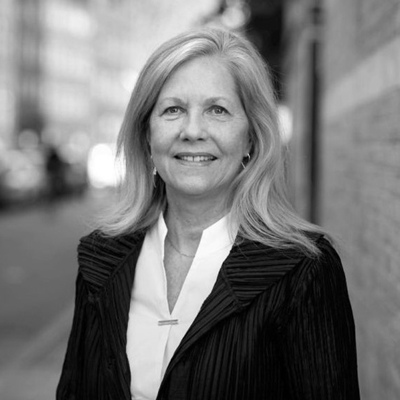Hay Forum Sevilla 2024
The second Hay Forum Sevilla will take place from March 14 to 17, 2024, at various venues in the Andalusian capital. The program includes 18 events where topics such as literature, architecture, the environment, and more will be discussed.
Event P3
Opening doors to the future through reading
José Manuel Lara Foundation Project
Venue: Colegio IES Ramón Carande
Read moreTres Mil Viviendas, the neighbourhood with the lowest per capita income in the European Union. The children from this school, many of whom are Roma, will get to talk with the author of two works that they themselves have chosen and read beforehand. The aim of the meeting is to encourage reading, and at the same time to explore the idea that books are not only a source of escape or leisure, but that more and better reading, can lead to them improving their grades and opening doors to a better future. The José Manuel Lara Foundation pursues social transformation through reading, as it believes that a young person who reads will gain more knowledge, be more skilled in critical thinking, with greater opportunities for the future and, therefore, happier.
Redry, David Galan, teacher from Valladolid, the poet of the networks and winner of the ESPASAPOESIA 2019 award. He is the author chosen by the students of the high school IES Ramon Carande.
Organised together with Fundación José Manuel Lara

Event 5
Greg Clark in conversation with Miquel Molina
The century of cities?
Venue: Fundación Valentín de Madariaga y Oya
Read moreThe 21st century is set to be the century of cities. It is estimated that by 2080 some 10 billion people will live in just 10,000 cities. Cities are the natural environment for innovation and progress. However, cities are also the victims of new threats to the global world. They are the ones most affected by the climate emergency, but also by the growing social inequalities that are shaking up long-established models of urban coexistence. Few people are better placed to talk about the crises and opportunities of urban development, giving us concrete examples, than Greg Clark, urban planner and writer who has advised on the development of more than 300 cities. He is the author of books such as Global Cities. A Short History, and The Innovation Economy: Implications and Imperatives for States and Regions. Clark will be in conversation with Miquel Molina, deputy editor of La Vanguardia, novelist and essayist, who authors a weekly opinion column on cities and culture.
The event is presented by Nuria Canivell, an architect at the Román & Canivell studio, of which she was founder 30 years ago, and is currently dean of the College of Architects of Seville.
There will be a reception at 18:30. The event will start afterwards.
Event in English with simultaneous translation into Spanish.
Event 6
Luis Mateo Díez, José María Merino and Juan Pedro Aparicio in conversation
Filandon stories
Venue: Fundación Cajasol (Sala Machado)
Read moreIn the past, in the warmth of the hearthside of each village home, families would share ancestral tales in spoken form, reviving and strengthening their ties to their land. In Castilla y León, Asturias and Galicia, this tradition is called El Filandón, and it is still practised today in some villages. The distinguished writer from León, Luis Mateo Díez has nurtured this tracing of roots and attachments in a special way. Together with his fellow countrymen and writers, José María Merino and Juan Pedro Aparicio, Díez considers how El Filandón epitomises why belonging to a place can leave a powerful mark on people. Indeed, the 1984 film El Filandón brought three of his stories along with two by other authors, to the screen with Díez himself as the narrator.
Luis Mateo Díez, most recent winner of the Cervantes Prize 2023, is a member of the Real Academia Española. He is the only author in the Spanish language to have won the National Fiction Prize twice and the Critics' Prize twice, with his novels La fuente de la edad (1986) and La ruina del cielo (1999). José María Merino is also a member of the Real Academia Española. Among other awards, he has won the National Prize for Literature, the Critics' Prize (1986), the Children's and Young People's Literature Prize (1993) and the Narrative Prize (2013). He is the author of numerous novels, essays, short stories and poetry. Juan Pedro Aparicio received the Castilla y León Prize for Literature in 2012 in recognition of his career and his Retratos de Ambigú won the Nadal Prize in 1988. As well as novels, he has also written essays, journalistic articles, short stories and travel books.
The event is presented by the Sevillian poet and journalist from El Diario de Sevilla Braulio Ortiz.
Event in Spanish
Organised together with Penguin Random House Grupo Editorial
Event 7
Yvonne Farrell in conversation with Martha Thorne
Beyond architecture
Venue: Fundación Valentín de Madariaga y Oya
Read moreArchitect Yvonne Farrell is co-founder of the prestigious Irish firm, Grafton Architects (named for the street on which it was originally located). Farrell along with partner Shelley McNamara won the 2020 Pritzker Architecture Prize, to cite just one among numerous awards. The firm is especially known for academic buildings such as Bocconi University in Milan, the University of Engineering and Technology (UTEC) in Lima, Peru, and the Marshall Building, a major development for the London School of Economics and Political Science (LSE). In addition to her professional practice, throughout her career, she has been involved in teaching and lecturing at many recognized schools in Europe and North America.
The work of Grafton Architects understands the city "par excellence" and Farrell will discuss with urbanist and senior advisor to the Obel Award, Martha Thorne, the keys to making great architecture that goes beyond merely a functional building to create designs that contribute to the individual, community, and city in multiple ways.
Presents the conversation Valentín de Madariaga Parias. Renowned architect and president of the Valentín de Madariaga y Oya Foundation, an entity that pays tribute to his father. His passion for contemporary art is manifested through his private collection and the FVMO-MP Collection at the foundation he leads.
There will be a reception at 20:00 h, the event will start afterwards.
Event in English with simultaneous translation into Spanish.
Event 8
Nano de Jerez in conversation with Alberto García Reyes
Flamenco, seduction and life
Venue: Fundación Cajasol (Sala Machado)
Read moreCayetano Fernández González is better known as Nano de Jerez, the acclaimed flamenco singer. Known for his contribution to flamenco, especially in singing, with his unique style, and his masterful interpretation of palos, or branches of flamenco, delving deep into their essence. He has participated in countless performances and worked with renowned artists such as Antonio Mairena and Paco Ascensio. His career developed at a time when flamenco as an art form was undergoing a process of evolution and expansion, and Nano de Jerez was an influential figure in this. His legacy lives on in the memory of flamenco lovers, and his influence can be felt in the work of later generations of artists, inspired by his authentic style.
In 1980, at the Concurso Nacional de Arte Flamenco de Córdoba, he won the National Flamenco prize, Premio Niña de los Peines, for his flamenco bulerías. In 1994, the Peña Flamenca El GarbanzoFlamenco Club in Jerez, honoured him with the gold medal in recognition of his outstanding career as an artist. That same year, Nano also joined the line up of El Encuentro: el son cubano y el flamenco.
Nano de Jerez will be in conversation with Alberto García Reyes, a Spanish journalist and writer renowned for his distinguished career in the cultural sphere. Editor of ABC de Sevilla newspaper, Reyes has also ventured into the literary world with several works such as Banderas Negras (2006), La invención del pueblo andaluz (2012) and La abuela Lola (2016). A noted expert on flamenco, his reviews of this artistic genre are remarkable.
Event in Spanish











